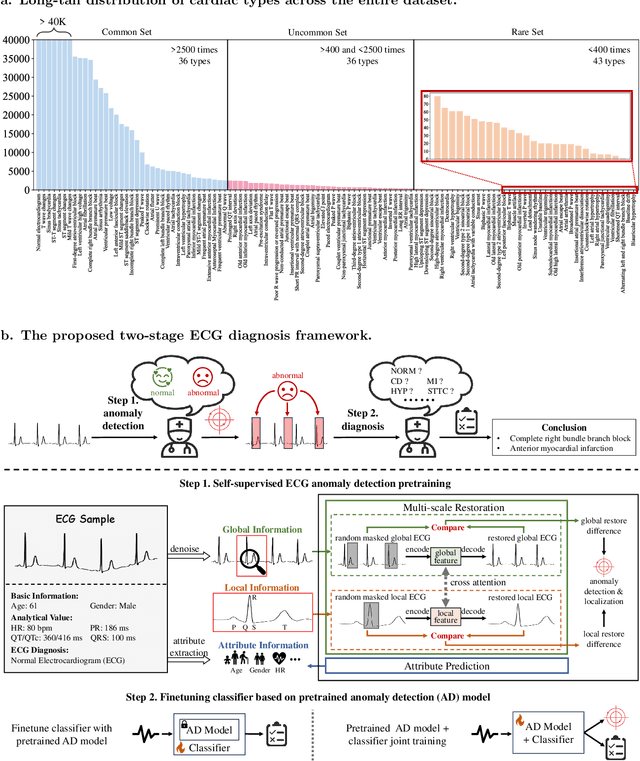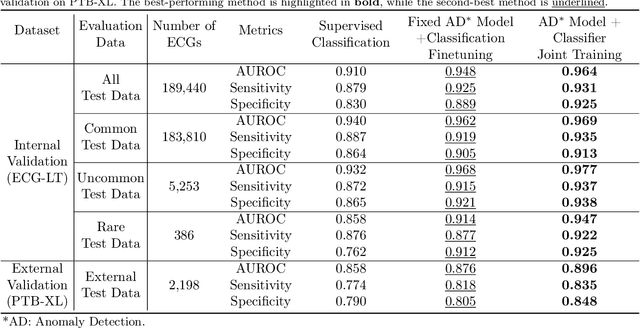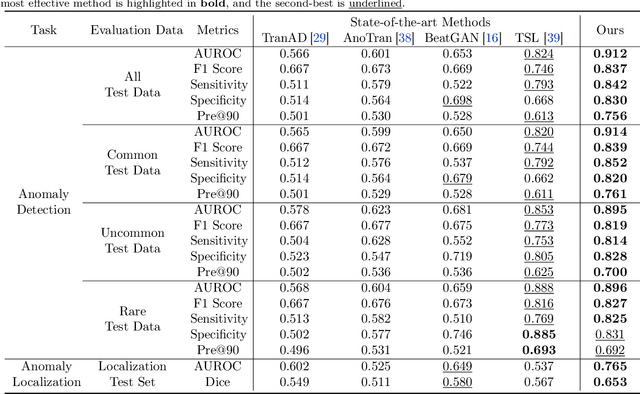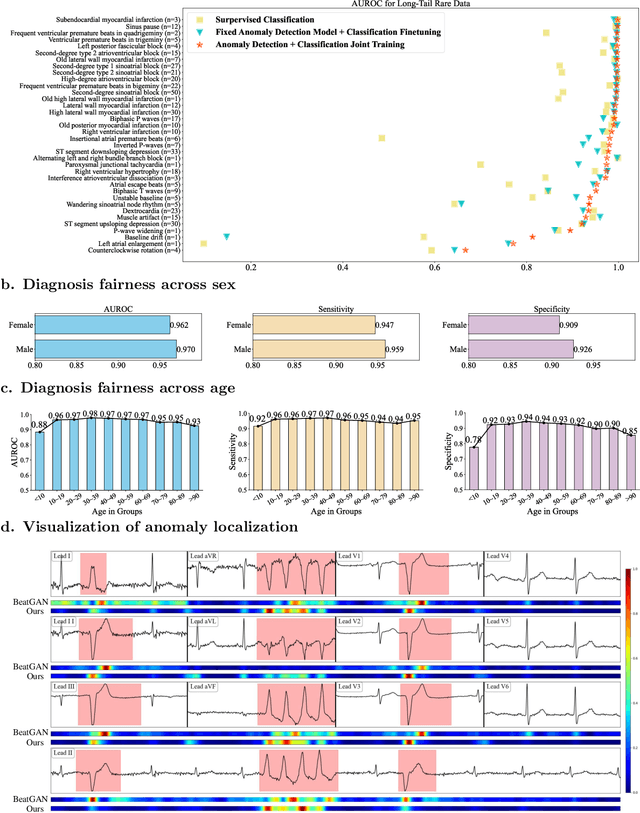Self-supervised Anomaly Detection Pretraining Enhances Long-tail ECG Diagnosis
Paper and Code
Aug 30, 2024



Current computer-aided ECG diagnostic systems struggle with the underdetection of rare but critical cardiac anomalies due to the imbalanced nature of ECG datasets. This study introduces a novel approach using self-supervised anomaly detection pretraining to address this limitation. The anomaly detection model is specifically designed to detect and localize subtle deviations from normal cardiac patterns, capturing the nuanced details essential for accurate ECG interpretation. Validated on an extensive dataset of over one million ECG records from clinical practice, characterized by a long-tail distribution across 116 distinct categories, the anomaly detection-pretrained ECG diagnostic model has demonstrated a significant improvement in overall accuracy. Notably, our approach yielded a 94.7% AUROC, 92.2% sensitivity, and 92.5\% specificity for rare ECG types, significantly outperforming traditional methods and narrowing the performance gap with common ECG types. The integration of anomaly detection pretraining into ECG analysis represents a substantial contribution to the field, addressing the long-standing challenge of long-tail data distributions in clinical diagnostics. Furthermore, prospective validation in real-world clinical settings revealed that our AI-driven approach enhances diagnostic efficiency, precision, and completeness by 32%, 6.7%, and 11.8% respectively, when compared to standard practices. This advancement marks a pivotal step forward in the integration of AI within clinical cardiology, with particularly profound implications for emergency care, where rapid and accurate ECG interpretation is crucial. The contributions of this study not only push the boundaries of current ECG diagnostic capabilities but also lay the groundwork for more reliable and accessible cardiovascular care.
 Add to Chrome
Add to Chrome Add to Firefox
Add to Firefox Add to Edge
Add to Edge